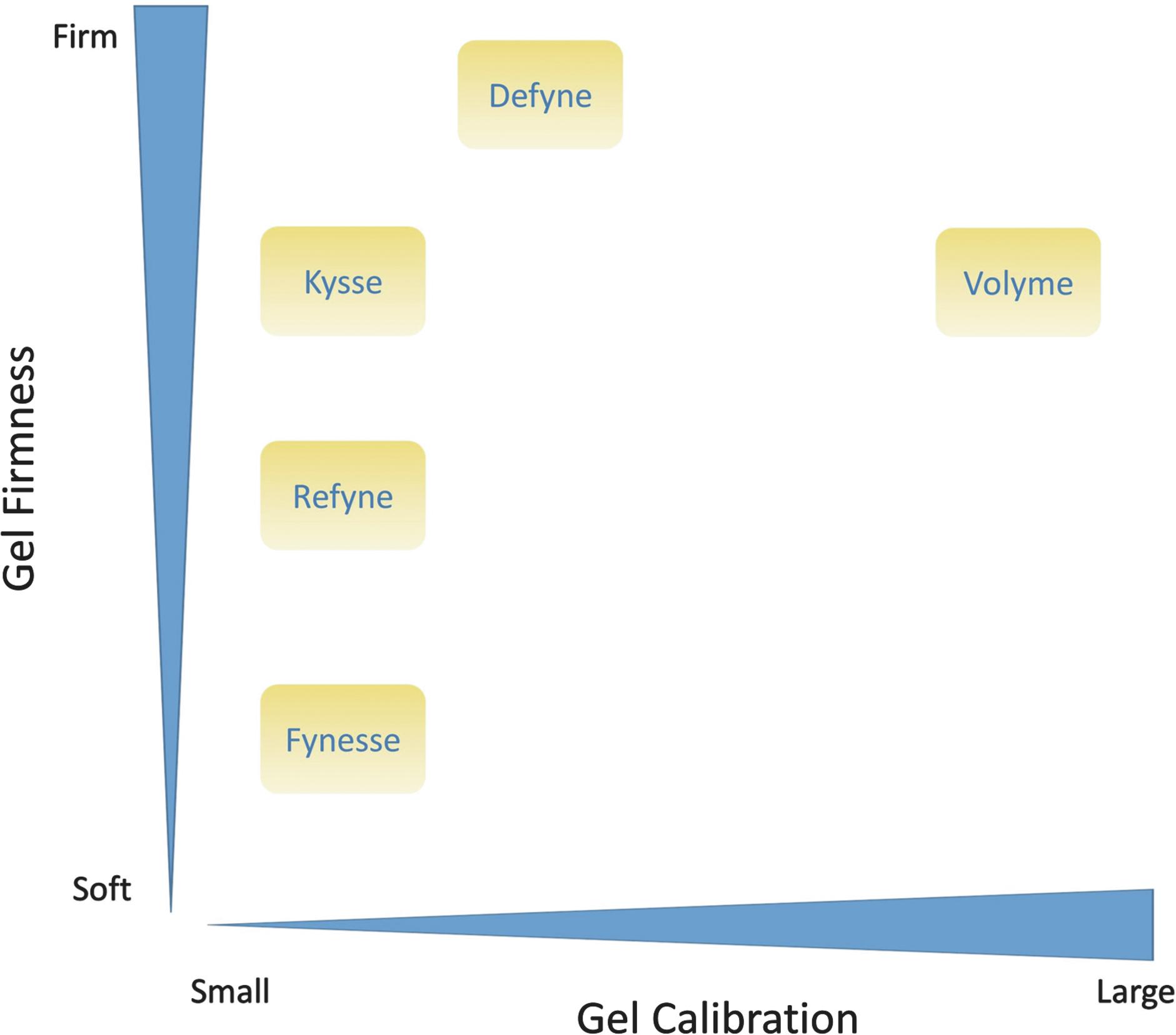Physical Address
304 North Cardinal St.
Dorchester Center, MA 02124
In 2016, the Emervel family has been renamed Restylane to fit better in the portfolio of Galderma.
Because of the unique optimal balance technology (OBT), it is different from the other Restylane fillers. The Emervel family can be still identified by the blue color of the boxes and brand names with an “e” at the end. The previous name appears as small text on the box.
The Emervel family comes in several products with and without lidocaine (except for Emervel Touch, now Restylane Fynesse, which is only available without lidocaine).
The Emervel family is one of the few hyaluronic acid families with good clinical data behind their products.
The products have been on the market for several years now in Europe and the United States and appear to be efficacious and safe.
Soft tissue filling with hyaluronic acid (HA) began with single-purpose fillers designed and tested for nasolabial folds but subsequently used for multiple facial areas. This began in 2004 with the use and approval of Restylane and was followed rapidly with other HA fillers with similar physical characteristics and rheology. The need for HA filling material that is designed for more than the nasolabial folds coincided with the global approach to treating multiple areas of the face to achieve a natural yet more youthful look sought by our patients. Filling material that will restructure deep facial defects and others that are designed for more superficial defects with a natural appearance stimulates the need for customized filling material for each area. The Emervel family of HA fillers has evolved with specific products designed to treat variable facial indications, including nasolabial folds, marionette lines, perioral lines, cheek folds, tear troughs, and fine dermal wrinkles. Each has specific physical properties and flow characteristics to solve these specific facial problems of aging skin and soft tissue.
As fillers have evolved, the physical characteristics of each family of products have a distinctive composition giving them individual flow characteristics. These modifications make these individual fillers adaptable to various facial areas. The rheology of the filler is related to its formulation, including the source of HA, the concentration of HA, type of cross-linking, degree of cross-linking, particle size, and the manufacturing process.
Emervel (Galderma, Lausanne, Switzerland) is a family of five fillers with a range of physical properties designed to accommodate all levels of facial correction. The variables that determine the nature of each product include the following:
HA concentration (20 mg/mL)
Cross-linking (by 1,4-butanediol diglycidyl ether [BDDE])
Calibration (this is the preferred term of the company) or particle size
Because all of the Emervel products maintain the same concentration (20 mg/mL), they vary the degree and type of cross-linking, as well as the three levels of calibration or particle size. This approach to customized filling nature is referred to as “optimal balance technology” (OBT) ( Table 11.1 ). From 2016 on, the Emervel family was integrated in the Restylane brand. For this, several new names were created, making the Emervel brand still distinguishable from the old Restylane brand ( Table 11.2 ).
| Calibration | Cross-Linking | Concentration | |
|---|---|---|---|
| Benefit | Lifting effect | Firmness | Filler longevity |
| Adversity | Too big Uneven flow |
Implant perceptible with inflammation | Hardness |
| Indication | Old Name | New Name |
|---|---|---|
| For very superficial indications, such as fine periocular wrinkles | Emervel Touch | Restylane Fynesse |
| For medium-sized lines and folds, infraorbital hollow | Emervel Classic | Restylane Refyne a |
| For deeper lines and folds as well as volume deficits | Emervel Deep | Restylane Defyne a |
| For volume substitution, such as cheeks, chin, etc. | Emervel Volume | Restylane Volyme |
| For lip volume augmentation | Emervel Lip | Restylane Kysee |
a These products are available in the United States (by 2021).
Calibration is a unique term that is used for this group of fillers and describes the process of processing bulk cross-linked HA into smaller particle sizes to produce optimal size for the area to be treated. This is produced through a “sieving” process for optimal homogenicity. The products with a low cross-linking and with small calibration are designed for superficial injection (e.g., Restylane Fynesse [former Emervel Touch]) as the products with high cross-linking and larger calibration are designed for deeper and more volumetric injections (e.g., Restylane Volyme [former Emervel Volume]). Except for Restylane Fynesse (former Emervel Touch), they are available with and without lidocaine. The calibration particle size and cross-linking determine the differences in the products. BDDE is the reactive cross-linker holding together strands of HA with one end free as a pendant. The degree of cross-linking determines the gel firmness. A firmer gel resists deformation caused by facial movement and has a larger duration but is harder to inject and may be palpable if injected too superficially. The degree of calibration also affects firmness and smaller size is injected easier but will disperse more easily. The superficial gels, Restylane Fynesse (former Emervel Touch) and Restylane Refyne (former Emervel Classic), are thus designed for dermis, while the larger particles are made for deeper and more loosely packed tissue such as subcutaneous tissue ( Fig 11.1 ).

Become a Clinical Tree membership for Full access and enjoy Unlimited articles
If you are a member. Log in here